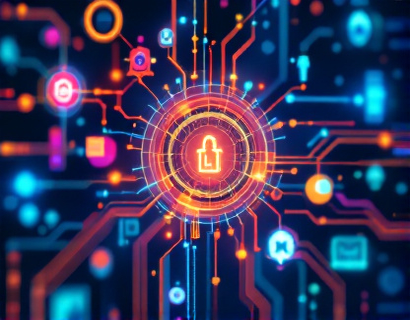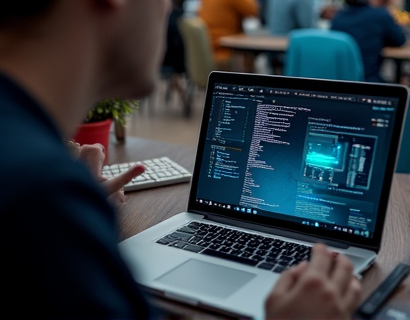Ethereum Layer 2: 2025 Insights - Mastering Scalability and Interoperability for Developers and Enthusiasts
As the Ethereum ecosystem continues to evolve, Layer 2 solutions have emerged as a critical component in addressing scalability and interoperability challenges. This comprehensive guide aims to provide developers and enthusiasts with essential insights and the latest updates to navigate the dynamic and evolving Ethereum landscape. In 2025, the focus on Layer 2 technologies remains paramount, as they play a pivotal role in enhancing the efficiency and accessibility of the Ethereum network.
Layer 2 solutions are designed to operate on top of the main Ethereum blockchain, or Layer 1, to offload transactions and reduce congestion. These solutions leverage various techniques such as state channels, sidechains, and rollups to achieve higher transaction throughput and lower fees. Understanding the intricacies of these solutions is crucial for anyone looking to stay ahead in the Ethereum development space.
Understanding Rollups
Rollups are one of the most promising Layer 2 solutions for Ethereum. They work by bundling multiple transactions off-chain and submitting a single transaction to the main chain, which contains the aggregated results. This process significantly reduces the load on the main chain while maintaining security and finality. There are two main types of rollups: Optimistic Rollups and ZK Rollups.
Optimistic Rollups assume that all transactions are valid and only challenge invalid transactions. This approach relies on a fraud proof mechanism, where any participant can prove that a transaction is fraudulent. If a fraud is detected, the rollup reverts the invalid transactions. Optimistic Rollups are known for their simplicity and lower computational requirements, making them an attractive option for many developers.
ZK Rollups, on the other hand, use zero-knowledge proofs to bundle and verify transactions off-chain. These proofs provide a succinct and verifiable proof of the transactions' validity without revealing the transaction details. ZK Rollups offer higher throughput and faster confirmation times but come with higher computational costs. Despite this, they are gaining popularity due to their robust security features and efficiency.
State Channels: Enhancing Microtransactions
State channels are another Layer 2 solution that excels in handling a high volume of microtransactions. Unlike rollups, state channels operate directly between two or more parties, allowing them to transact off-chain and only settle the final state on the main chain. This approach is particularly useful for applications requiring frequent and small transactions, such as gaming and decentralized finance (DeFi) protocols.
The key advantage of state channels is their low latency and minimal gas costs, as only the initial setup and final settlement interact with the main chain. However, state channels require both parties to be online simultaneously, which can be a limitation in certain use cases. Despite this, their efficiency and scalability make them a valuable tool in the Layer 2 ecosystem.
Sidechains: Bridging Ecosystems
Sidechains are independent blockchains that are linked to the Ethereum main chain through two-way pegs. They allow assets and data to be transferred between the sidechain and Ethereum, providing greater flexibility and interoperability. Sidechains can be customized to suit specific use cases, offering different consensus mechanisms and features compared to Ethereum.
One of the primary benefits of sidechains is their ability to experiment with new features and protocols without affecting the main chain. This makes them an attractive option for developers looking to test innovative ideas in a controlled environment. Additionally, sidechains can support different programming languages and smart contract frameworks, enhancing the overall diversity of the Ethereum ecosystem.
Interoperability: Connecting Blockchains
Interoperability is a critical aspect of the Layer 2 landscape, as it enables seamless communication and asset transfer between different blockchains. Ethereum's Layer 2 solutions often incorporate interoperability protocols to facilitate this connectivity. Cross-chain bridges and atomic swaps are key technologies in achieving interoperability.
Cross-chain bridges allow assets to be transferred from one blockchain to another, ensuring that users can leverage the strengths of multiple ecosystems. These bridges can be centralized or decentralized, with decentralized bridges being more secure and trustless. Atomic swaps, on the other hand, enable direct asset exchanges between different blockchains without the need for an intermediary, enhancing the efficiency of cross-chain transactions.
Current Challenges and Future Prospects
Despite the significant advancements in Layer 2 solutions, several challenges remain. Scalability, security, and user adoption are key areas that require continued focus. Scalability issues, such as the complexity of implementing and maintaining various Layer 2 protocols, can hinder widespread adoption. Security concerns, particularly around rollups and state channels, must be addressed to ensure user trust and confidence in these solutions.
Looking ahead, the Ethereum 2.0 upgrade, which includes the transition to a proof-of-stake (PoS) consensus mechanism, is expected to provide a more robust foundation for Layer 2 innovations. The introduction of shard chains and improved network capabilities will further enhance the scalability and efficiency of the Ethereum ecosystem. Additionally, the development of standardized protocols and interoperability frameworks will play a crucial role in fostering a more connected and seamless blockchain landscape.
Best Practices for Developers
For developers looking to leverage Layer 2 solutions, several best practices should be considered. First, it is essential to have a solid understanding of the underlying principles and mechanics of each Layer 2 technology. This knowledge will help in making informed decisions when selecting the most suitable solution for a specific application.
Second, developers should stay updated with the latest developments and updates in the Layer 2 space. The Ethereum community is highly active, and new tools and frameworks are continually being developed. Engaging with community resources, participating in forums, and following relevant projects can provide valuable insights and opportunities.
Third, security should always be a top priority. When implementing Layer 2 solutions, it is crucial to thoroughly test and audit smart contracts and protocols to identify and mitigate potential vulnerabilities. Collaborating with security experts and leveraging formal verification tools can enhance the robustness of the implementation.
Conclusion
As we navigate the evolving Ethereum landscape in 2025, Layer 2 solutions stand out as a vital component in addressing scalability and interoperability challenges. Rollups, state channels, sidechains, and interoperability protocols each offer unique advantages and use cases, providing developers and enthusiasts with a rich toolkit to enhance the Ethereum ecosystem.
By understanding the intricacies of these solutions and adhering to best practices, developers can effectively leverage Layer 2 technologies to build more efficient, scalable, and interconnected applications. The future of Ethereum is bright, and Layer 2 innovations will continue to play a pivotal role in shaping its trajectory.










































